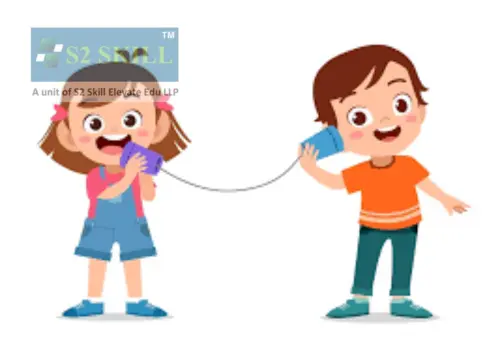Effective listening enhances communication, engagement, and learning. Pupils who have strong listening skills are more capable of understanding material, forming relationships, and contributing to class discussions.
However, listening requires practice and intention, and many students benefit from guided strategies for focusing and remembering information. Here are five effective strategies for helping students improve their listening skills and get more out of their educational experiences.

1. Incorporate Active Listening Exercises
Making the process fun is one of the most effective strategies to help pupils improve their listening abilities. When pupils are interested and engaged, they will automatically pay more attention. Begin with activities that pique their interest, such as storytelling and listening games. For example, present a narrative and then have them retell it in their own words.
*Simon Says* and similar games are also effective. You can customise it by adding commands that are pertinent to a lesson, encouraging pupils to concentrate on instructions. Educational rhymes and songs are another engaging technique to improve listening abilities.
2. Implement “Pair and Share” Activities
Learning to focus on main ideas helps students filter through information and retain the most critical points. Teach them to identify keywords, recognise main ideas, and distinguish important details. Start with short audio clips or simple stories, then ask questions that target specific information. This approach helps students hone in on what matters without getting overwhelmed.
Encourage students to practice summarising. After listening to a story or lecture, ask them to recap the main points in a sentence or two. Over time, they’ll improve their ability to identify the most important information while honing their listening skills.

3. Leverage Multimedia and Technology Tools
Students who practice mindful listening are more present and engaged. Begin a listening activity by walking students through a brief mindfulness exercise. Close their eyes, take a few deep breaths, and concentrate on being in the moment. This short exercise establishes the tone for careful listening.
When students are listening to a speaker, tell them to pay attention to eye contact, facial expressions, and gestures. Mindful listening practices help pupils stay focused by reducing distractions. Over time, these little workouts assist pupils in naturally improving their focus and listening endurance.
4. Use Listening Games and Challenges
Group activities naturally promote active listening because students must understand and respond to one another. In groups, students must pay great attention to their colleagues’ viewpoints and reply meaningfully. To ensure everyone pays attention, try small group discussions, peer teaching, or group projects, and assign specific roles to students, such as taking notes, leading, or summarizing.
Peer teaching, which involves students explaining concepts to one another, also improves listening abilities. They must listen carefully before asking inquiries or providing input. Collaborative exercises reinforce the curriculum, promote engagement, and help students improve their listening skills as they learn to absorb each other’s perspectives.

5. Model Good Listening Behavior
Introducing real-world audio experiences into the classroom makes listening more engaging. Play podcasts, interviews, or short movies about pertinent issues, and then have a discussion. Real-world audio exposes students to different speaking styles, accents, and speech rates, allowing them to adjust to diverse listening settings.
Guest lecturers can also provide good listening practice. They encourage students to pay attention to different voices and presentation styles, whether in the classroom or virtually. Field trips operate similarly, allowing students to listen to guides and experts in real-time. These experiences prompt students to listen actively and connect with the information in impactful ways.
Benefits of Active Listening Skills
Active listening is a powerful tool for student success as it enhances communication skills, deepens understanding of the material, and fosters stronger relationships.
- Improved comprehension: Active listening helps students understand the content being presented and how it applies to their learning.
- Better communication: Active listening helps students become better communicators by focusing on both verbal and non-verbal cues.
- Increased empathy: Listening skills can help students develop empathy by setting aside judgments and considering the other person’s perspective.
- Better problem-solving: Active listening can help students become better problem-solvers.
- Improved social relationships: Active listening can help students build meaningful relationships and develop social-emotional skills.
- Increased resourcefulness: Active listening can help students become more resourceful.
- Better collaborative skills: Active listening can help students improve their collaborative skills.
Conclusion
Improving students’ listening skills isn’t a one-time task but an ongoing process that benefits from a variety of approaches. By making listening fun and interactive, teaching them to focus on key points, encouraging mindful listening, promoting group collaboration, and incorporating real-world listening, you set up students to become better listeners. With these strategies, listening becomes a habit rather than a chore, enhancing students’ comprehension, engagement, and communication abilities in and out of the classroom. These listening skills ultimately set students up for greater academic success and prepare them for a lifetime of effective communication.




